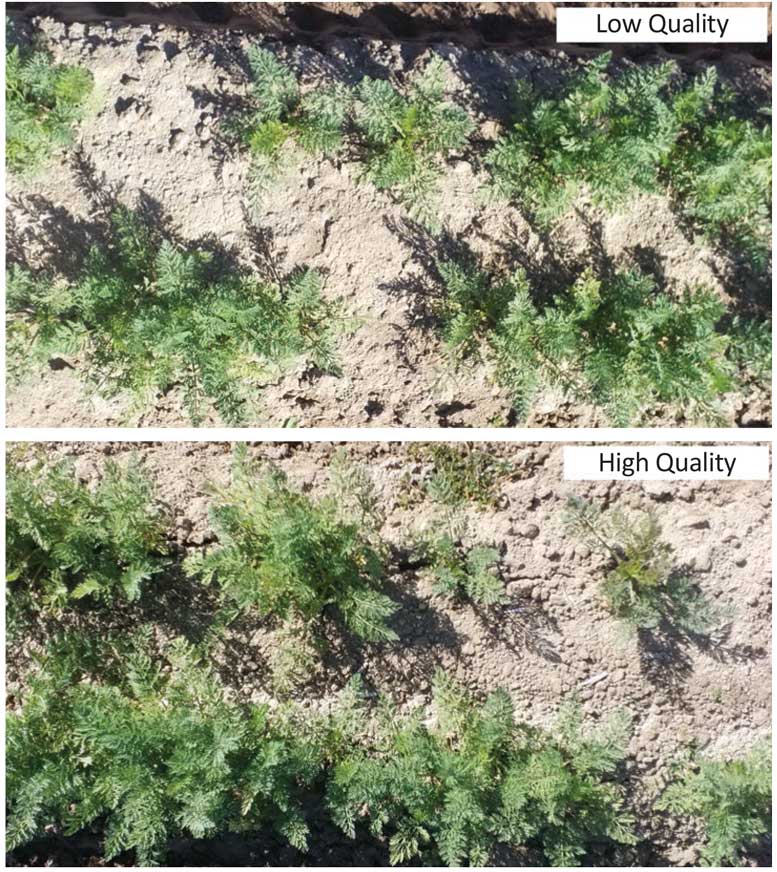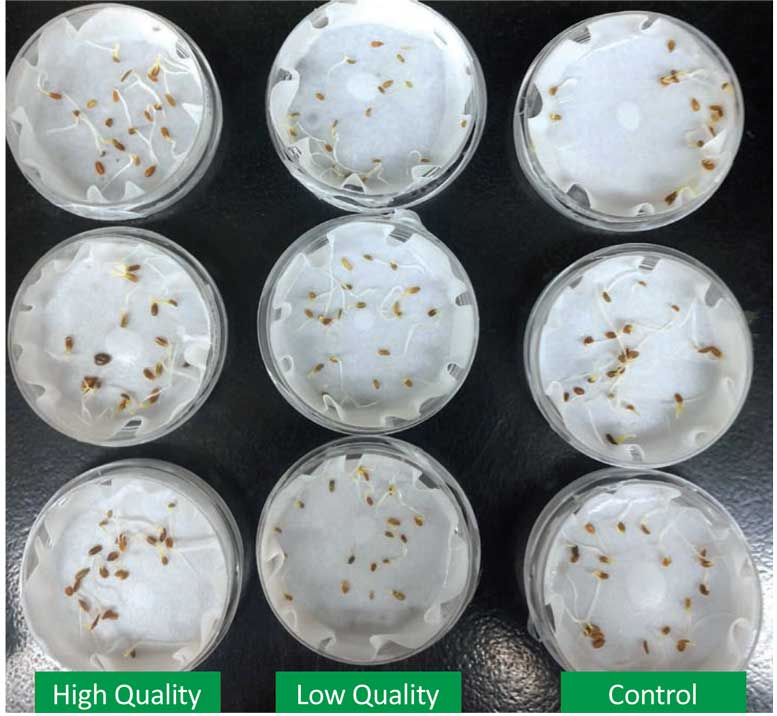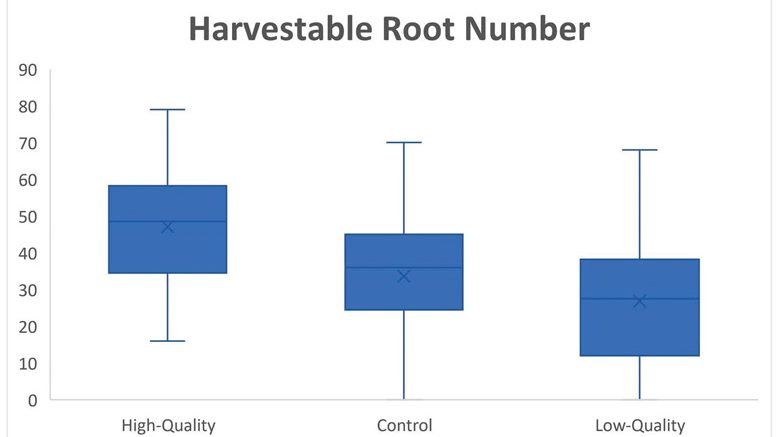|
Click to listen to this article
|
By Bill Rolling and Phil Simon, USDA-ARS Vegetable Crop Research Unit
USDA researchers are taking a close look at exactly what makes some carrot seeds germinate better than others in an effort to ultimately breed cultivars with improved germination. The work starts with the USDA carrot germplasm collection, which contains seed of more than 1,800 carrot accessions from around the world. This collection is a tremendous resource for carrot cultivar improvement because it contains incredible genetic diversity representing novel traits for improved environmental stress tolerance, pest and disease resistance, and beneficial plant physiology.
In 2016, a USDA project was initiated to identify beneficial traits in the USDA carrot collection and to use “fingerprints” found in the genetic data to efficiently introduce novel traits into production cultivars. The traits studied as part of this project were selected based on a survey of carrot industry stakeholders. Over 80 percent of the respondents of this survey were interested in improved germination. This is an important trait to emphasize because strong germination and stand establishment can reduce weed pressure without additional herbicide application, and consistent stands result in more harvestable roots.
The USDA carrot germplasm collection is a great place to look for novel traits relating to strong germination and stand establishment. With this goal, over 700 accessions from the USDA carrot germplasm collection were grown in Hancock, Wisconsin, to determine if there is variation for germination and to provide initial observations of accessions that are strong or weak germinators.

Search for Strong Germinators
Preliminary results from that previous project led to the current study titled “Screening Diverse Carrot Germplasm for Improved Germination and Seed Characteristics” funded by USDA-NIFA (#2020-10758). There are two major parts of this project: (1) identify accessions from the USDA carrot collection that germinate exceptionally and can be used to improve germination in cultivars; and (2) test if seeds’ traits such as size, shape or weight can be used to identify higher quality seeds with higher germination.
A total of 225 carrot accessions from the USDA collection are included in the study to identify parents to include in breeding programs targeting higher germination. Germination is highly complex, affected by genetics, the environment, and interactions between genetics and the environment. For this reason, seeds are being produced in a controlled greenhouse environment with each of the accessions represented by three to six individual plants.
Seeds were harvested in 2021, and a second replication of seeds is being produced in 2022. With this experimental design, the practicality of breeding for this trait can be estimated, while at the same time identifying those accessions that can be sources of improved germination. Once produced, seeds will be tested as to how well the seeds germinate in a controlled environment under optimal conditions, as well as challenging conditions including cool and overly warm temperatures.

Role of Seed Characteristics
Ten inbred varieties from the USDA carrot breeding program were used in experiments to estimate the relationship between seed characteristics and stand establishment. The seeds of these inbreds were quality “graded” by passing seeds through soil sieves to separate larger seeds and smaller seeds, followed by weighing the seeds. Seeds were considered high quality when they were larger and heavier and low quality when smaller. The germination and stand establishment of quality-graded seeds are being compared to a random sample of seed when grown in Hancock, Wisconsin, and El Centro, California.
Germination and carrot canopy height measurements were taken throughout the 2021 season at Hancock, Wisconsin. There, the high quality and low quality seeds germinated similarly. This matched results from a controlled environment germination experiment where quality-graded seeds had similar viability, though the lower quality/smaller seeds did germinate at a slightly lower percentage. Despite similar germination, this single year of results indicated that the high quality seeds were producing larger seedlings that were developing more quickly over the first six weeks of the growing season.
In El Centro, California, measurements were taken at the end of the growing season, with the number of harvestable roots acting as a proxy for stand establishment. Here, the high quality grade out-produced the low quality grade, and a significantly larger number of harvestable roots were produced.
This research will continue throughout 2022-23 to replicate the experiments completed in 2021. We look forward to sharing the final results of this project in 2023.

